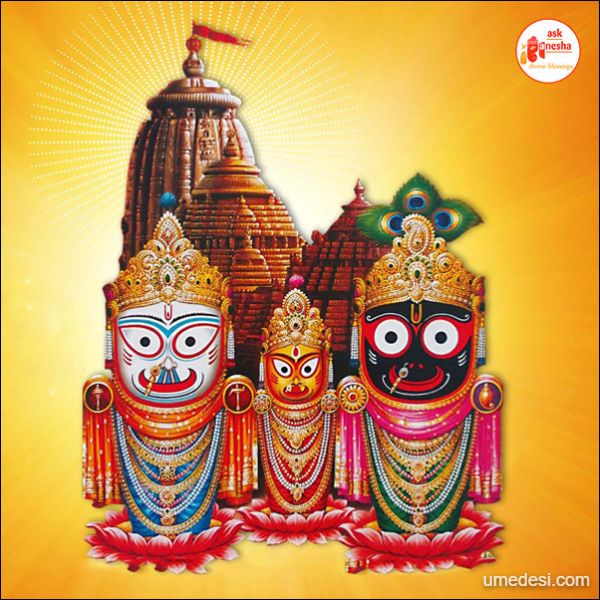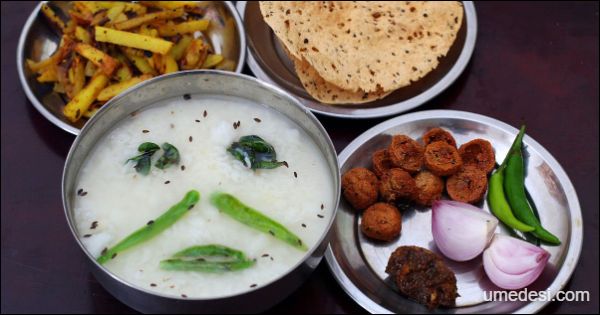What is Pana Sankranti?
The Oriya or Odia New Year is called “Pana Sankranti” or “Maha Vishuba Sankranti” and it is celebrated on April 14th every year. Pana Sankranti is a major festival in the state of Odisha, India, and is celebrated with great enthusiasm and joy. The language spoken is Odia or Oriya.
This day is also known as “Mesha Sankranti” and it marks the beginning of the solar year in the traditional Hindu calendar.
The festival is marked by various rituals and customs, including the preparation and consumption of a traditional drink called “Pana,” which is made of various ingredients like yogurt, milk, and jaggery.
The festival also involves offering prayers to Lord Jagannath, the presiding deity of the state, and seeking his blessings for a prosperous and happy new year.
The official language of Odisha is Odia, also known as Oriya. It is a language spoken by the people of the state of Odisha and also by people in neighboring areas like West Bengal, Jharkhand, and Chhattisgarh.
Happy Pana Sankranti in Odia script is:
ପଣା ସଂକ୍ରାନ୍ତି ର ଶୁଭେଚ୍ଛାରେ ଜୟ ଜଗନ୍ନାଥ ।
English transliteration: “Pana Sankranti ra shubhechha re jai Jagannath!”
Why is Pana Sankranti celebrated?
The festival of Pana Sankranti or Maha Vishuba Sankranti is of great religious and cultural significance for the people of Odisha. It is a time to celebrate the start of a new year and to seek blessings for a prosperous and successful year ahead.
The festival is also associated with the worship of Lord Jagannath, who is the presiding deity of Odisha and is considered to be an embodiment of Lord Vishnu.
In addition to its religious significance, Pana Sankranti is also linked to the agricultural cycle of the region. The festival marks the onset of the harvest season and is a time when farmers start preparing their fields for the upcoming crop.
The Pana drink that is prepared and consumed during the festival is believed to be a tonic that provides strength and energy to the farmers as they begin their work in the fields.
The festival also has cultural significance as it is a time when people come together to celebrate and enjoy various cultural events like music, dance, and traditional sports. The festival provides an opportunity for people to showcase their cultural heritage and to renew their bonds of friendship and community.
Who is Lord Jagannath?
Lord Jagannath is a major deity worshiped in the state of Odisha, India, and is the presiding deity of the famous Jagannath Temple located in the city of Puri. The word “Jagannath” means “Lord of the Universe” and is a Sanskrit term that is often used to refer to Lord Vishnu, one of the principal deities of the Hindu religion.
The Jagannath Temple in Puri is one of the most famous and revered temples in India and is considered to be one of the Char Dham pilgrimage sites for Hindus.
The temple is believed to have been built in the 12th century and is famous for its imposing architecture and intricate carvings. The temple complex also includes several other structures, such as the Pancha Tirtha, a collection of five sacred bathing spots, and the Ananda Bazar, a market area that sells offerings and souvenirs to pilgrims.

One of the most famous stories associated with Lord Jagannath is the tale of his origin. According to the legend, Lord Jagannath, along with his brother Balabhadra and sister Subhadra, was originally worshiped as a wooden idol in a temple in the ancient city of Mathura. The idols were later taken to Puri by King Indradyumna, who was instructed to do so in a dream by Lord Vishnu himself.

Another famous story associated with the Jagannath Temple is the annual Rath Yatra, or Chariot Festival, which is held in Puri every year.
The festival involves the procession of the three deities from the Jagannath Temple to the Gundicha Temple, which is located about three kilometers away. The idols are placed on three massive wooden chariots and are pulled by thousands of devotees through the streets of Puri. The festival is a major tourist attraction and is considered to be one of the largest religious gatherings in the world.
The Juggernaut?
The word “Juggernaut,” it is often used to refer to a powerful force that is difficult to stop or control.
The term is originated from the name “Jagannath,” which was applied to the wooden idol of Lord Jagannath that was originally worshiped in the temple at Mathura.
The term was later used to describe the massive wooden chariots used in the Rath Yatra festival, which were believed to be almost impossible to stop once they began moving.
Over time, the term “Juggernaut” came to be used in a more general sense to describe any powerful force that was difficult to resist.
What special dishes are made for this festival?
Pana Sankranti is an important festival in the state of Odisha, and it is celebrated with great enthusiasm and joy. During this festival, several traditional dishes are prepared, and people enjoy feasting together. Here are a few popular dishes that are prepared during Pana Sankranti, along with their recipes:
Pana (Panaka) Drink:
This is a traditional drink that is prepared using a combination of yogurt, jaggery, water, and other flavorings. It is a refreshing and energizing drink that is commonly consumed during the festival.
Ingredients:
1 cup yogurt
1/2 cup jaggery, grated or powdered
2 cups water
1/2 tsp roasted cumin powder
1/2 tsp black salt
1/4 tsp ginger powder
1/4 tsp cardamom powder
Mint leaves, for garnish
Ice cubesInstructions:
In a mixing bowl, whisk the yogurt until it becomes smooth.
Add the jaggery and whisk again until the jaggery dissolves.
Add the water, roasted cumin powder, black salt, ginger powder, and cardamom powder, and mix well.
Chill the drink in the refrigerator for 30 minutes to 1 hour.
Add ice cubes to the glasses and pour the chilled Pana drink into them.
Garnish with mint leaves and serve.Pakhala:

Pakhala is a traditional dish made by soaking rice in water overnight and then seasoning it with a variety of spices and herbs. It is a staple food in Odisha, and is commonly consumed during the summer months
Ingredients:
2 cups cooked rice
4 cups water
1/2 cup curd
1/2 tsp cumin seeds
1/2 tsp mustard seeds
1/2 tsp fenugreek seeds
1 dried red chili
1/4 tsp asafoetida
Salt, to taste
Coriander leaves, for garnishInstructions:
In a large bowl, combine the cooked rice and water and mix well. Cover the bowl and let it sit at room temperature for 6-8 hours or overnight.
Once the rice has soaked for a sufficient amount of time, add the curd and mix well.
In a pan, heat some oil and add the cumin seeds, mustard seeds, fenugreek seeds, and dried red chili. Fry until the mustard seeds start to pop.
Add the asafoetida and fry for a few seconds.
Add the seasoning to the rice mixture and mix well.
Add salt to taste and mix again.
Garnish with coriander leaves and serve.In addition to these dishes, people also prepare a variety of other traditional dishes like dalma, ambil, khiri, and manda pitha during Pana Sankranti.
Ambil:
Ambil is a traditional drink made with rice flour and yogurt. It is a cooling drink that is perfect for the hot summer months.
Ingredients:
1/2 cup rice flour
2 cups water
1 cup yogurt
1 tsp cumin seeds
1 tsp mustard seeds
1 dried red chili
1/4 tsp asafoetida
Salt, to taste
Coriander leaves, for garnishInstructions:
In a mixing bowl, whisk the rice flour and water together until there are no lumps.
In a pan, heat some oil and add the cumin seeds, mustard seeds, and dried red chili. Fry until the mustard seeds start to pop.
Add the asafoetida and fry for a few seconds.
Add the rice flour mixture to the pan and stir well.
Add salt to taste and mix well.
Let the mixture simmer for 5-10 minutes until it thickens.
In a separate bowl, whisk the yogurt until it becomes smooth.
Add the thickened rice flour mixture to the yogurt and mix well.
Add some water if needed to achieve the desired consistency.
Garnish with coriander leaves and serve chilled.Khiri:
Khiri is a traditional rice pudding that is made using milk and jaggery. It is a popular dessert in Odisha and is commonly served during festivals.
Ingredients:
1/2 cup rice
2 cups milk
1/2 cup jaggery, grated or powdered
1/4 tsp cardamom powder
Cashews and raisins, for garnishInstructions:
Rinse the rice and soak it in water for at least 30 minutes.
In a heavy-bottomed pan, bring the milk to a boil.
Add the soaked rice to the boiling milk and stir well.
Reduce the heat and let the rice cook in the milk, stirring occasionally, until it becomes soft and mushy.
Add the grated or powdered jaggery to the pan and mix well.
Let the mixture simmer for a few minutes until the jaggery melts and combines with the rice and milk.
Add the cardamom powder and mix well.
Remove the pan from the heat and let the khiri cool for a few minutes.
Garnish with cashews and raisins and serve warm or chilledManda Pitha:
Manda pitha is a steamed rice dumpling that is filled with sweetened coconut and jaggery. It is a popular sweet dish in Odisha and is commonly prepared during festivals.
Ingredients:
For the outer covering:
1 cup rice flour
1/4 tsp salt
Water, as neededFor the filling:
1 cup grated coconut
1/2 cup jaggery, grated or powdered
1/4 tsp cardamom powderInstructions:
In a mixing bowl, combine the rice flour and salt.
Add enough water to the bowl and knead the mixture into a smooth dough.
In a separate bowl, mix the grated coconut, jaggery, and cardamom powder together to form the filling.
Take a small portion of the dough and roll it into a ball.
Flatten the ball in the palm of your hand to form a small disc.
Place a small portion of the filling in the center of the disc.
Bring the edges of the disc together to cover the filling and form a dumpling.
Repeat the process until all the dough and filling is used up.
Steam the dumplings in a steamer for 15-20 minutes.
Remove the dumplings from the steamer and let them cool for a few minutes.
Serve the manda pitha warm or at room temperature.Note: The amount of water needed to make the dough may vary depending on the quality of the rice flour. Add water gradually and knead the dough until it becomes smooth and pliable.
Want more? Check out the link below for more dishes and recipes.
